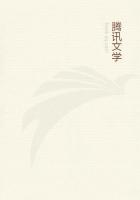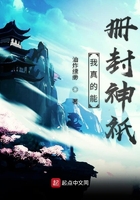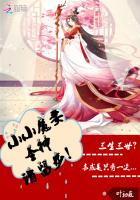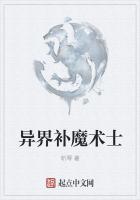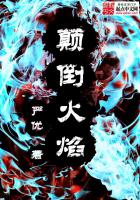Its hair was white, its eyes blue, and its lashes flaxen. Its pupils were of a reddish color, and its physiognomy that of a Mandingo. He says such cases are not at all uncommon; they are really negro albinos. Thomas Jefferson, in his "History of Virginia," has an excellent description of these negroes, with their tremulous and weak eyes; he remarks that they freckle easily. Buffon speaks of Ethiops with white twins, and says that albinos are quite common in Africa, being generally of delicate constitution, twinkling eyes, and of a low degree of intelligence; they are despised and ill-treated by the other negroes. Prichard, quoted by Sedgwick, speaks of a case of atavic transmission of albinism through the male line of the negro race.
The grandfather and the grandchild were albinos, the father being black. There is a case of a brother and sister who were albinos, the parents being of ordinary color but the grandfather an albino. Coinde, quoted by Sedgwick, speaks of a man who, by two different wives, had three albino children.
A description of the ordinary type of albino would be as follows:
The skin and hair are deprived of pigment; the eyebrows and eyelashes are of a brilliant white or are yellowish; the iris and the choroid are nearly or entirely deprived of coloring material, and in looking at the eye we see a roseate zone and the ordinary pink pupil; from absence of pigment they necessarily keep their eyes three-quarters closed, being photophobic to a high degree.
They are amblyopic, and this is due partially to a high degree of ametropia (caused by crushing of the eyeball in the endeavor to shut out light) and from retinal exhaustion and nystagmus. Many authors have claimed that they have little intelligence, but this opinion is not true. Ordinarily the reproductive functions are normal, and if we exclude the results of the union of two albinos we may say that these individuals are fecund.
Partial albinism is seen. The parts most often affected are the genitals, the hair, the face, the top of the trunk, the nipple, the back of the hands and fingers. Folker reports the history of a case of an albino girl having pink eyes and red hair, the rest of the family having pink eyes and white hair. Partial albinism, necessarily congenital, presenting a piebald appearance, must not be confounded with leukoderma, which is rarely seen in the young and which will be described later.
Albinism is found in the lower animals, and is exemplified ordinarily by rats, mice, crows, robins, etc. In the Zoologic Garden at Baltimore two years ago was a pair of pure albino opossums. The white elephant is celebrated in the religious history of Oriental nations, and is an object of veneration and worship in Siam. White monkeys and white roosters are also worshiped. In the Natural History Museum in London there are stuffed examples of albinism and melani** in the lower animals.
Melani** is an anomaly, the exact contrary of the preceding. It is characterized by the presence in the tissues and skin of an excessive amount of pigment. True total melani** is unknown in man, in whom is only observed partial melani**, characterized simply by a pronounced coloration of part of the integument.
Some curious instances have been related of an infant with a two-colored face, and of others with one side of the face white and the other black; whether they were cases of partial albinism or partial melani** cannot be ascertained from the descriptions.
Such epidermic anomalies as ichthyosis, scleroderma, and molluscum simplex, sometimes appearing shortly after birth, but generally seen later in life, will be spoken of in the chapter on Anomalous Skin Diseases.
Human horns are anomalous outgrowths from the skin and are far more frequent than ordinarily supposed. Nearly all the older writers cite examples. Aldrovandus, Amatus Lusitanus, Boerhaave, Dupre, Schenck, Riverius, Vallisneri, and many others mention horns on the head. In the ancient times horns were symbolic of wisdom and power. Michael Angelo in his famous sculpture of Moses has given the patriarch a pair of horns. Rhodius observed a Benedictine monk who had a pair of horns and who was addicted to rumination. Fabricius saw a man with horns on his head, whose son ruminated; the son considered that by virtue of his ruminating characteristics his father had transmitted to him the peculiar anomaly of the family. Fabricius Hildanus saw a patient with horns all over the body and another with horns on the forehead.
Gastaher speaks of a horn from the left temple; Zacutus Lusitanus saw a horn from the heel; Wroe, one of considerable length from the scapula; Cosnard, one from the bregma; the Ephemerides, from the foot; Borellus, from the face and foot, and Ash, horns all over the body. Home, Cooper, and Treves have collected examples of horns, and there is one 11 inches long and 2 1/2 in circumference in a London museum. Lozes collected reports of 71cases of horns,--37 in females, 31 in males, and three in infants. Of this number, 15 were on the head, eight on the face, 18 on the lower extremities, eight on the trunk, and three on the glans penis. Wilson collected reports of 90 cases,--44 females, 39 males, the *** not being mentioned in the remainder. Of these 48 were on the head, four on the face, four on the nose, 11 on the thigh, three on the leg and foot, six on the back, five on the glans penis, and nine on the trunk. Lebert's collection numbered 109 cases of cutaneous horns. The greater frequency among females is admitted by all authors. Old age is a predisposing cause. Several patients over seventy have been seen and one of ninety-seven.
Instances of cutaneous horns, when seen and reported by the laity, give rise to most amusing exaggerations and descriptions.
The following account is given in New South Wales, obviously embellished with apocryphal details by some facetious journalist:

